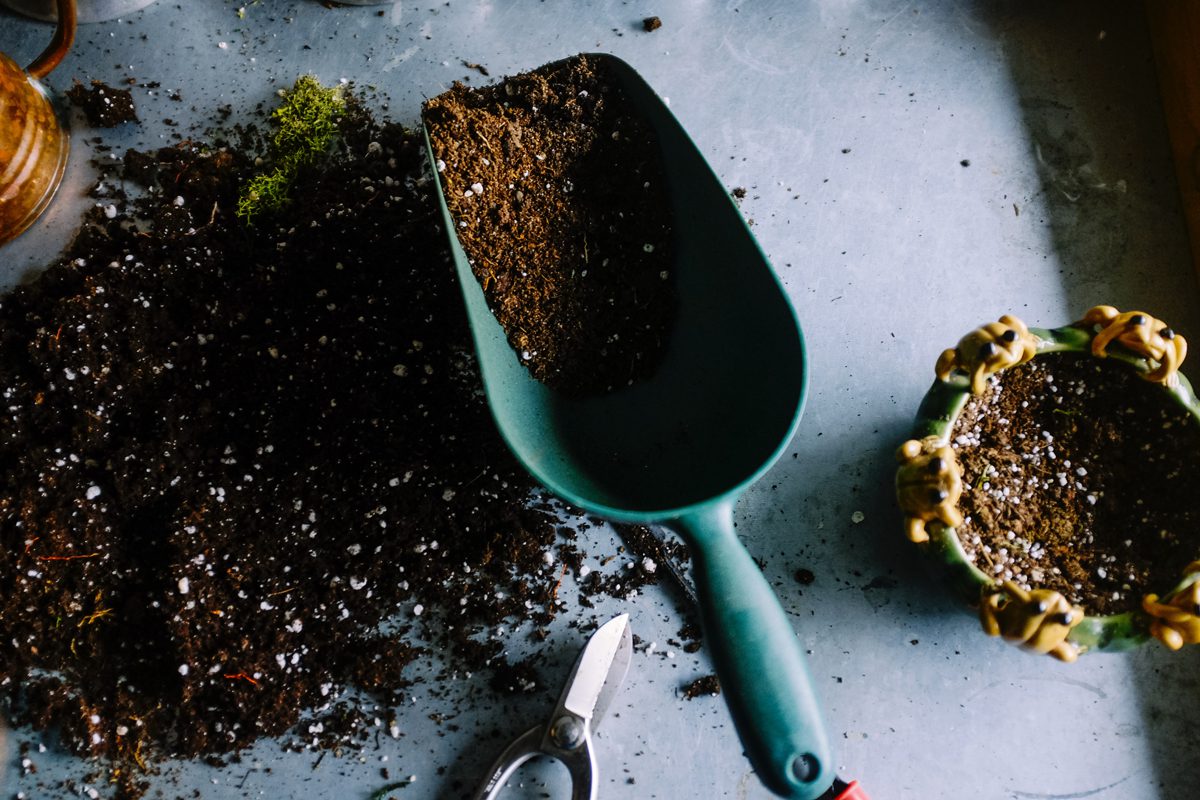If gardening isn’t already one of your favorite at-home hobbies for the spring and summer seasons, you may want to consider giving it a try. It’s a great way to spend time outside, it can reap some yummy rewards if you decide to grow produce, and there are so many different ways to set one up that anyone with a small patch of yard or even a balcony can start one. Think it’s too late in the summer to start? It’s not, especially when you choose transplants (plants that have already been grown) or crops that are harvested in the fall. Whether you’re ready to get started or just want to upgrade your current garden, keep reading for our top tips.
Set your plants up for success
Before you begin, make sure you have the tools you need. The basics include gloves, a hand trowel, a spade, a rake, a hoe, a long hose with an adjustable nozzle, and a wheelbarrow. If you’re using raised beds or containers for your garden, you’ll need to get those in advance. Just make sure any containers you’re using have a hole in the bottom for drainage, then add a layer of rocks at the bottom to prevent soil from also falling out.
Pick the best spot for your garden based on what you’re going to grow and how much sunlight the plants need to get – most vegetables need six to eight hours per day! You can plant directly into the ground or use raised beds if you have some extra space in your yard. In a smaller space, use containers like buckets, pots, or barrels for planting.
Choose the right plants for your region and time of year
To grow a successful garden, you first need to choose plants that will thrive in the environment you’ve set up. This tool will help you figure out what plants will grow in your area, and when to plant them. If you’re planting from seed, the seed packet will also provide some good information regarding when to plant the seeds for the highest chance of success. You can also check with your local garden center for advice.
Next, decide what to grow based on your preferences. If you’re growing produce, consider what regional produce you will cook with most often. If you’re a gardening beginner, you may want to stick to plants that are hearty and easy to grow, like tomatoes, cucumbers, and herbs such as basil.
Keep your growing plants healthy
The most important thing to remember when keeping a late-summer garden healthy? Water! When it’s extremely hot outside it’s almost impossible to over-water your plants, especially if they’re planted directly in the ground. You’ll know your plants need to be watered if their soil is dry to the touch and you have trouble pushing your fingers into it. With the correct amount of water, the soil will be damp, not flooded. Try to water your plants in the morning so the leaves can dry off before the sun has risen, and aim to water the roots, not the leaves – wet leaves can be damaged by the sun.
Get a workout, not an injury
Gardening might seem like a hobby that’s easy on your body, but it can actually be quite strenuous – especially if you’re doing a lot of digging or lifting heavy rocks. While the activity is great for your health and fitness, you should take precautions to avoid hurting yourself.
Warm up like you would before any physical activity. Take plenty of breaks during your work, especially if your gardening forecast includes high temperatures or humidity – in which case you should also remember to drink plenty of water. Use tools like a wheelbarrow, or help from other people, to lift and move heavy objects. Wear the right footwear with plenty of support and protection (no flip-flops!). Remember to bend at the hips and knees to avoid back strain, which is a common complaint for gardeners.
One last important safety tip – if you’re digging, remember to call the digger’s hotline in your area to check that you won’t come into contact with any utility lines.
Make sure your insurance policy covers your garden
Not only does a garden provide a fun and healthy way to spend some time outdoors, it can also have a surprising amount of monetary value once you add up the gardening tools, furniture, plants, and fencing you might have. A storm or a burglary could ruin many expensive items, not to mention weeks or months of your work. Let’s make sure you’re covered if that happens.
A home insurance policy will cover your garden if it’s considered a “permanent feature” of your home, and this coverage usually includes acts of God, like storms, snow, high winds, or other occurrences out of your control (such as a falling tree or items from a neighbor’s property blowing into your yard and causing damage). Contact us to find out if your policy covers your garden, and what incidents specific carriers consider “acts of God”. To get coverage for items that are not permanent fixtures, they would likely need to be included on your homeowner’s contents list.
Theft should be covered under your comprehensive homeowner’s insurance policy and it’s more common than you might think, since a garden shed is easier to break into than a home. Another thing to consider is liability – if someone gets hurt in your garden you are liable for their injuries. Make sure your homeowners policy includes coverage for these situations.
Now you have the information you need to start your garden, keep it growing and protect it – go out there and get planting! If you have questions about the protection provided under your current homeowner’s policy, SBI would love to help. Fill out the form below to get started.

